Asbestos is a fibrous mineral that was once widely used in construction and industrial materials.
It has high resistance to heat and chemicals and high sensitivity, qualities that are useful in various applications in the building and industry.
Studies have shown that asbestos can contribute to cancer, which led the Environmental Protection Agency to ban asbestos, although the government began regulating its use in the 1970s.
Asbestos is no longer used in the same way as it once was, but it still remains in old houses and buildings.
Asbestos-containing materials pose a danger during the reconstruction or demolition of these buildings.
Disturbing areas that contain asbestos can release fibers into the air, where they can be inhaled and lead to cancer and asbestosis.
However, not all asbestos-containing substances are associated with cancer.
How the size, shape and chemical composition of asbestos fiber affect your health.
Long, thin fibers are placed deeper in the lungs, while short, wide fibers are less likely to invade the lungs, but can still cause side effects.
[lwptoc]
What is Lung Cancer?
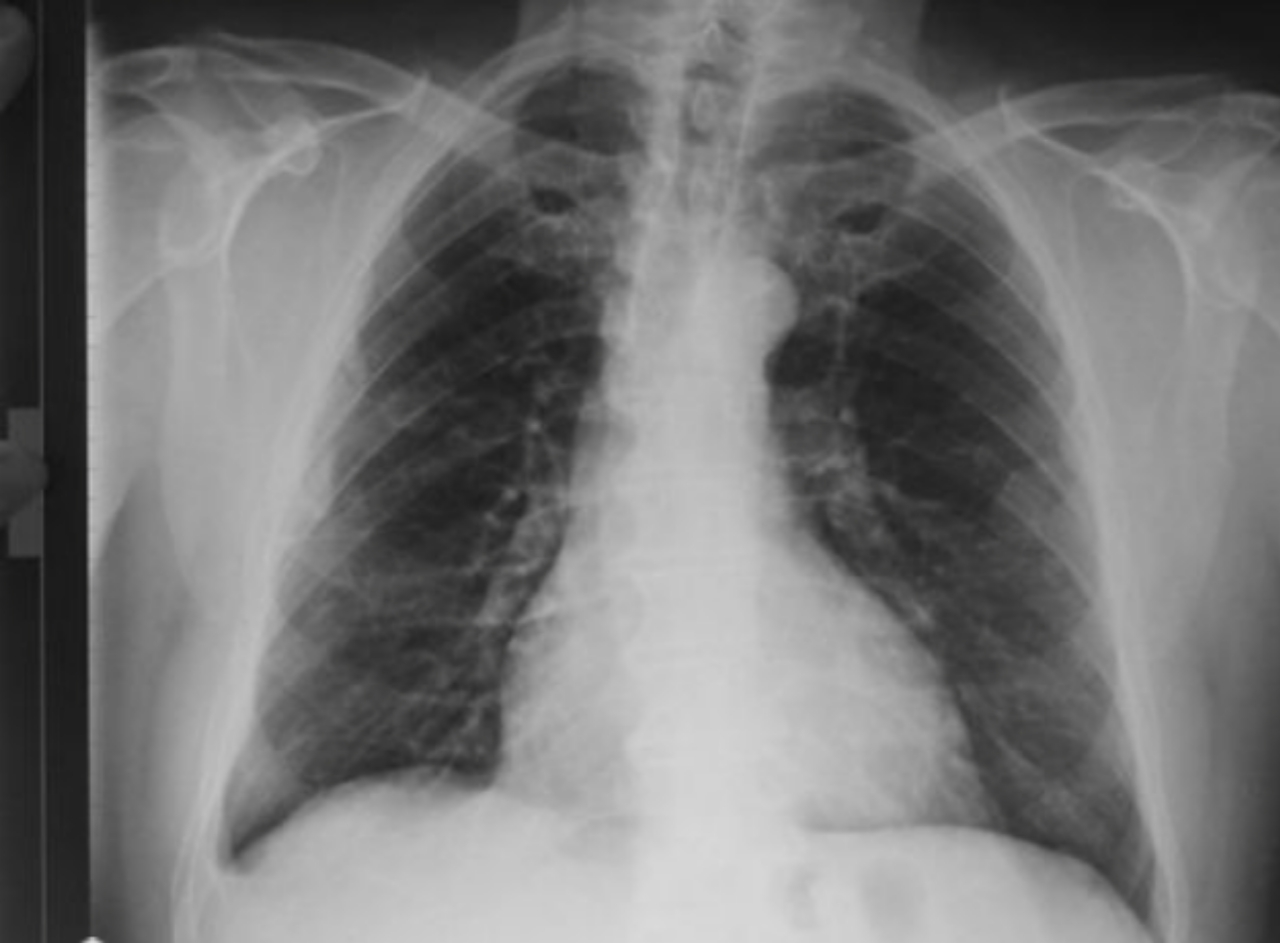
Lung cancer begins with the formation of a mass (tumor) in the lungs by cells from structurally normal lung tissue that multiply out of need and control.
This mass grows in its original environment, and in later stages it spreads to surrounding tissues or to distant organs (liver, bone, brain, etc.) through the circulation, causing damage.
Lung cancer is the leading cause of death among men and the second most common type of cancer in women.
Approximately 1.3 million men worldwide die of lung cancer each year. However, with newly developed treatments, life expectancy and quality of life have increased.
Lung Cancer: Health Effects of Asbestos Exposure
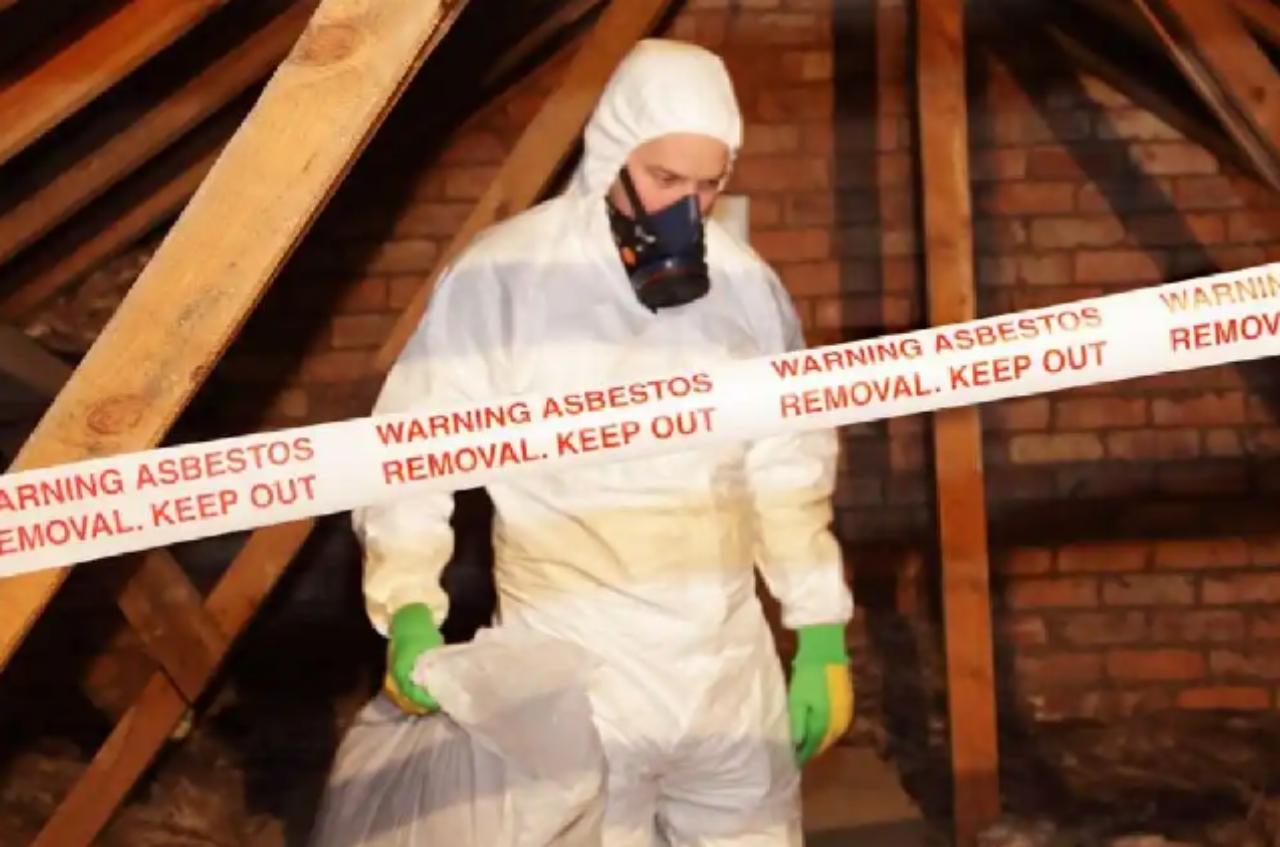
The 1996 INSERM collective expert report reaffirmed that all varieties of asbestos are carcinogenic. But the inhalation of asbestos fibers can also lead to other pathologies such as asbestosis or pleural plaques.
Toxicological Mechanism
Asbestos fibers are made up of bundles of fibrils which separate very easily under the effect of machining, impact, friction… to form a cloud of very fine dust, often invisible to the naked eye.
The dimension of the fibers is decisive in evaluating their effects on health:
- The smaller a particle, the deeper it can penetrate the respiratory system;
- The longer and finer the fibres, the more difficult it is for the body to eliminate them, and the more dangerous they are.
The fibers retained in the lungs can interact locally with the tissues and cause inflammation of the lung and/or the tissue which envelops it, the pleura.
These manifestations are very progressive and are not easily detected at an early stage.
If the quantity of retained fibers is large, fibrosis of the deep lung, asbestosis , may appear after several years.
The epithelial cells of the bronchi are also impaired by the fibers (disturbed cell divisions).
In some cases and after a long latency period (between the start of exposure and the onset of the disease), a cancerous transformation may occur (bronchopulmonary cancer).
These bronchopulmonary cancers will be all the more frequent when there is concomitant exposure to other carcinogenic agents (effect of tobacco in particular).
Finally, some fibers will tend to migrate outside the pleural cavity to reach its outer envelope: the parietal pleura.
At this level, we can also see the development of areas of localized fibrosis (called pleural plaques) or, after an even longer latency, cancer of the pleura: mesothelioma.
Pleural Involvement
There are several pleural lesions that can coexist or follow one another:
- pleural plaques (or circumscribed pleural fibrosis) that may calcify over time,
- benign pleurisy: fluid effusion,
- diffuse pleural thickenings,
- coiling atelectasis: condensation of a pulmonary territory.
Pleural plaques are most often asymptomatic and have long been considered an inconsequential “marker of exposure” to asbestos.
The improvement of surveillance techniques, in particular the use of the chest scanner, allowing better detection of pleural plaques, has made it possible to collect numerous data and to study on more than 5000 subjects the possible link between pleural plaques and the incidence of mesothelioma. pleural or the possible link between pleural plaques and the risk of death from lung cancer.
Lung Cancer From Asbestos: How Asbestos Increases The Risk Of Cancer
Serious health risks are associated with asbestos exposure. Exposure primarily affects the lungs, leading to lung cancer, and mesothelioma.
Some studies suggest that the disorder may be related to the development of throat cancer, colon cancer, and possibly other cancers.
People suffering from asbestos-related health problems were probably exposed before the 1970s.
The health effects of asbestos exposure are not rapid.
There is a period of about 20 to 30 years before the symptoms begin to present themselves.
Those with significant exposure may benefit from regular chest X-rays and other diagnostic tests for changes in the lungs.
Asbestosis
Scarring of the lungs, called asbestosis, causes breathing in asbestos fibers. It is a non-cancerous lung disease that causes severe shortness of breath.
In the case of significant exposure, asbestos can lead to pulmonary fibrosis: asbestosis. The risk of asbestosis and its severity depend on the level and duration of exposure.
The latency time is very variable. It is all the shorter as the exposure to asbestos has been high. It is generally between 10 and 20 years.
There is no effective medical treatment for asbestosis to date. But the symptoms can be managed. The evolution is variable: either it remains stable, or it can progress to respiratory failure.
The disease cannot be cured; But the symptoms can be managed.
Lung cancer is a concern for those exposed to asbestos. Those exposed are at risk for small cell carcinomas and small cell carcinomas.
Although the risk of developing lung cancer after exposure to asbestos is significantly increased in smokers, smokers are still at risk.
Mesothelioma
This is a rare type of aggressive cancer caused by asbestos secretion.
This type of cancer affects the mesothelium, giving a line to each of the body’s cavities. In the US, About 2,000 people are diagnosed with mesothelioma each year.
Lung Cancer and Asbestos
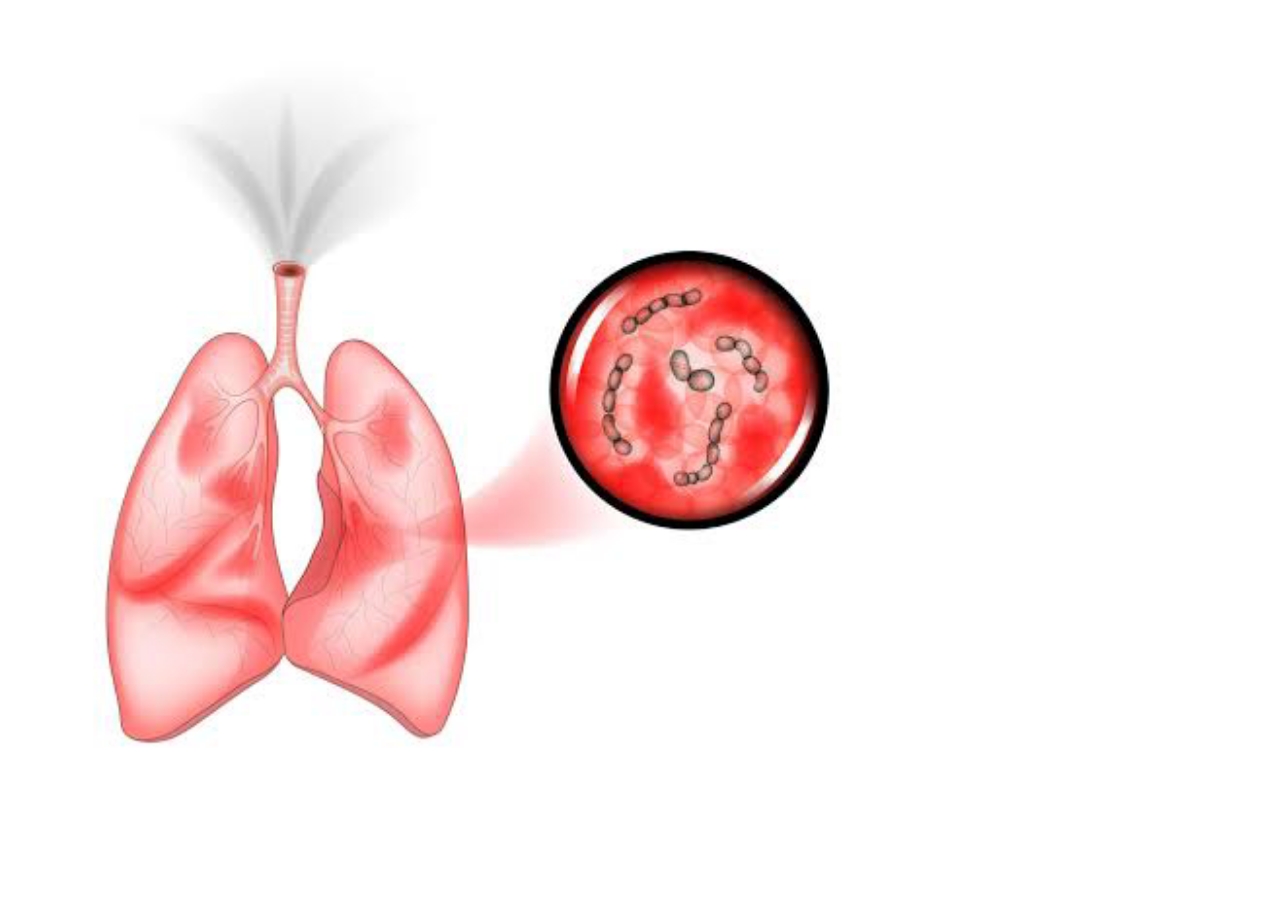
Most asbestos-related cancers affect the lung tissue, the bronchi (bronchopulmonary cancers) or the pleura (pleural mesothelioma).
It happens that mesotheliomas appear in envelopes other than the pleura: the peritoneum (which surrounds the viscera), the pericardium (which surrounds the heart) and the testicular tissue.
The role of asbestos in the appearance of laryngeal and ovarian cancers was confirmed by the IARC in May 2009.
The level of evidence is limited concerning the role of asbestos in the appearance of colorectal cancer, pharynx and stomach (IARC 2012).
A recent study finds a significant dose-effect relationship between the incidence of colon cancer and exposure to asbestos.
In all cases, the first symptoms or radiological signs occur several years after exposure.
Bronchopulmonary Cancer
Exposure to asbestos alone constitutes a risk factor for bronchopulmonary cancer, even in the absence of asbestosis.
The risk of tumor damage is increased by exposure to other carcinogenic agents, in particular tobacco smoke.
The joint effect on the risk of bronchopulmonary cancer is compatible with a multiplicative model (RBP, 2015)
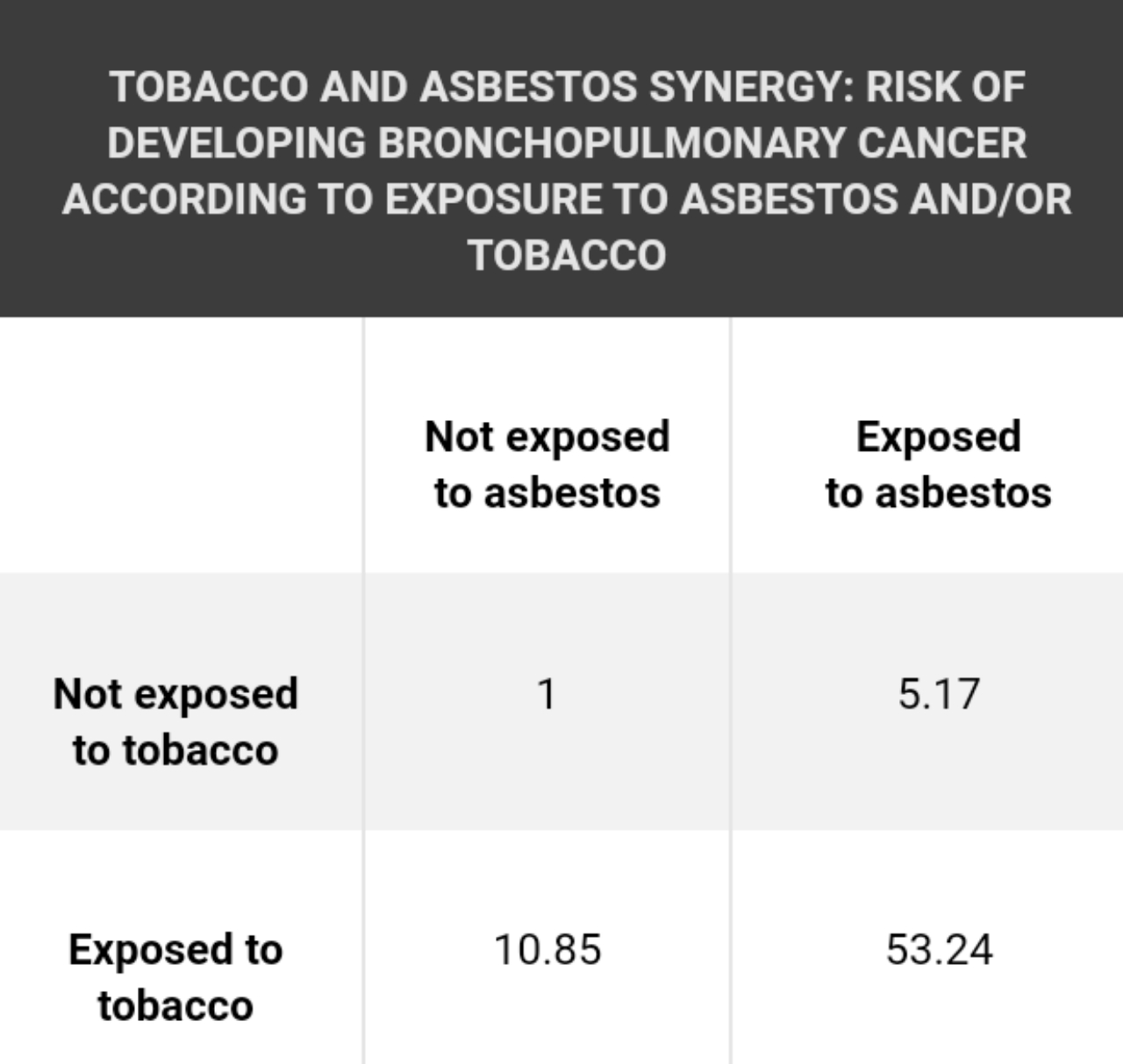
Bronchopulmonary cancer appears on average 15 to 20 years after exposure.
In a number of cases, lung cancer can be cured, especially when diagnosed early. The treatment depends on the degree of evolution of the disease, the localization of the tumors and the general state of health.
9 Jobs That Increase Risk Of Lung Cancer From Asbestos
Who is most at risk Of Lung Cancer From Asbestos?
The workplace was once a common ground for some employees to be exposed to asbestos.
Workplace that pose the greatest risk of exposure to asbestos are:
- Miners
- Shipyard workers
- Car workers, especially those who produce brake linings and clutches
- Railway workers
- Insulation manufacturers and installers
- Construction workers
- Gas mask manufacturers
- Rescuers
- Demolition workers
Family members of workers are believed to be more at risk of developing an asbestos-related disease.
Asbestos fibers could have been collected into clothing during the work day, and could be inhaled by children and friends when the worker comes home each day.
If you are at risk for an asbestos-related disease, talk to your doctor about the risks you are considering. To see more post on Physical & Mental Health click here.
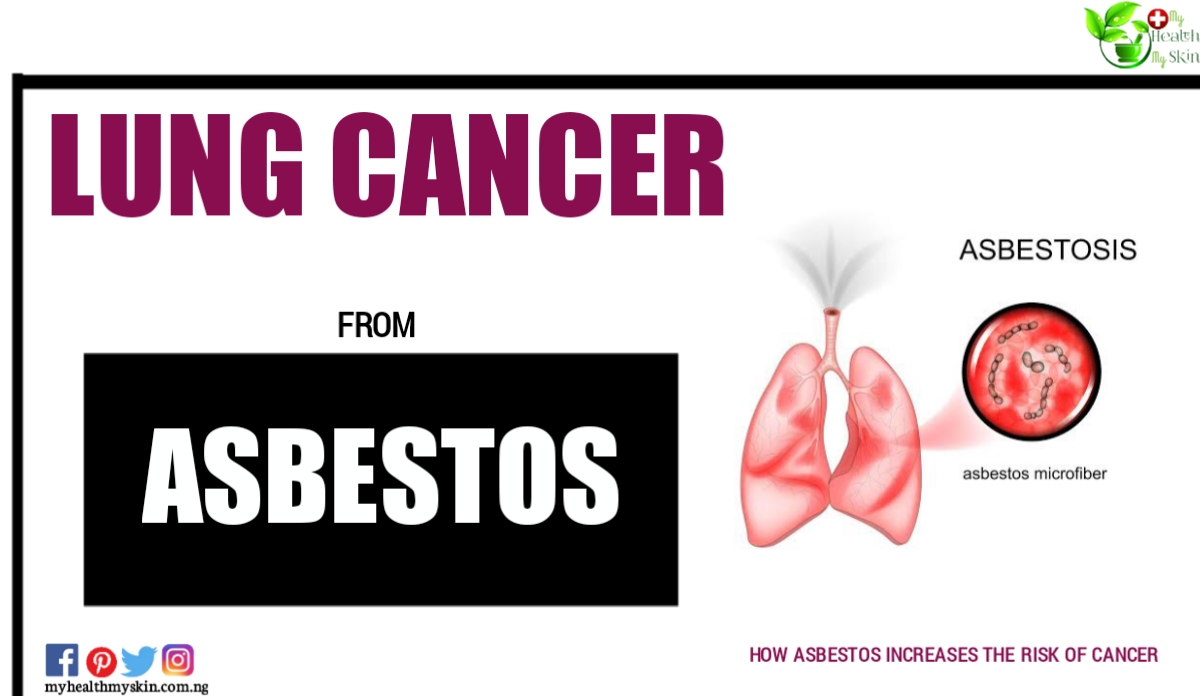
Do You Know Anyone With Lung Cancer From Asbestos? Comment Below!






